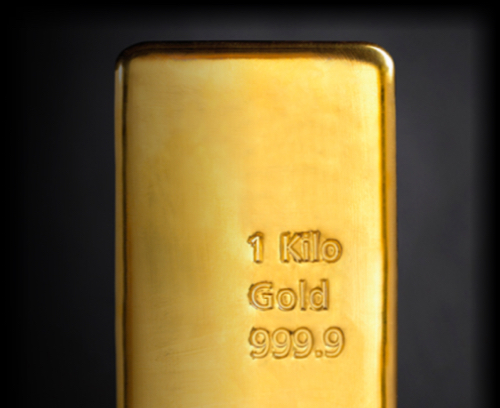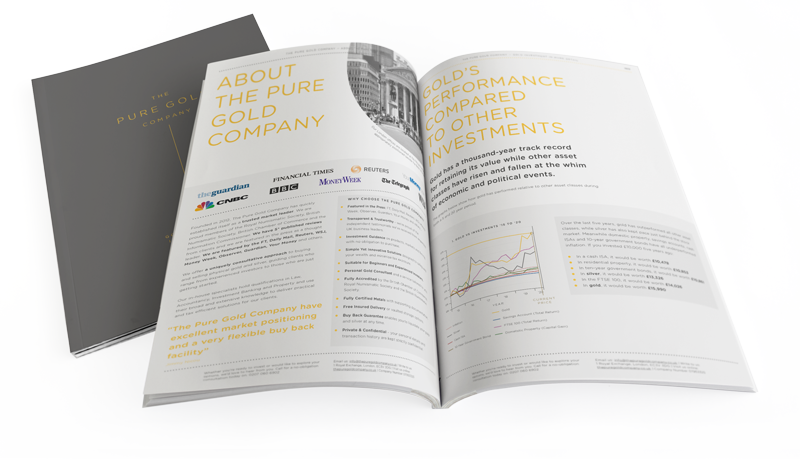Listen to article…
In a perpetual marketplace, the year end is an arbitrary time. Whatever the date, trades are still made and the price of goods, stocks and other investments still go up or down. But the end of the year, or the beginning of a new one, is as good a time as any to take stock of the market environment and consider what the next 12 months will hold. Analysts, investment banks and experts are setting out their predictions for gold for 2025, and the optimism of 2024 has not dissipated.
It would be hard to beat the stellar rise of physical gold in 2024, and few of last year’s predictions came anywhere close to suggesting the growth of over 25% in the gold price that we actually saw. This year the outlook is more muted but still very positive, with growth predicted by most experts. Here’s what they’re saying now:
2025 GOLD PRICE PREDICTIONS
J.P. Morgan
The world’s largest investment bank was positive on gold last year, and is keeping that stance into 2025.
“We maintain our multi-year bullish outlook on gold as the most likely macro scenarios in 2025 still skew bullish for the metal,” said Gregory Shearer, head of Base and Precious Metals Strategy at J.P. Morgan. “We are forecasting prices to rise towards $3,000/oz” in 2025. ( £2,390 oz GBP )
The central tenet of the bank’s bullish stance is a confluence of ‘U.S. fiscal deficit concerns, central bank reserve diversification into gold, inflationary hedging and a fraying geopolitical landscape’. This broad range of circumstances illustrates the multi-faceted nature of gold demand. With so many factors influencing the price of the precious metal, there are many opportunities for growth.
Goldman Sachs
The world’s second-largest investment bank is equally bullish on gold with a similar $3,000 per ounce price expectation for the end of 2025. Goldman Sachs said in a note to clients in late October that central bank buying has reset the relationship between gold and interest rates. Theoretically the value of gold should fall when interest rates rise because gold doesn’t pay interest and investors can get a more attractive return elsewhere. However, despite elevated interest rates for some time, gold has continued to surge ahead. Central bank buying is at least one impetus behind this rise, including ramped up purchasing from emerging market central banks.
‘Concern about the risk of financial sanctions is likely one of the reasons central banks have increased their buying of gold. Emerging market central bank purchases of gold have risen notably since the freezing of Russian central bank assets in 2022, following Russia’s invasion of Ukraine’, according to Goldman Sachs Research.
The investment bank also suggests that western investors could return to the market to hedge ‘against potential geopolitical shocks, including potential rises in trade tensions, Federal Reserve subordination risk, and debt fears.’
Their note was published before the outcome of the US election, so it was prescient considering the Trump stance on trade-related tariffs which could put pressure on geopolitics and inflation.
Deutsche Bank
Deutsche Bank’s price forecast is lighter than J.P. Morgan and Goldman Sachs at around $2,800 per ounce, (£2,230 GBP) but the investment bank still sees positive drivers of the gold price this year.
‘The precious metal is likely to remain in demand in 2025 as well, despite the relatively high capital market rates that are expected and the strong U.S. dollar. The reason for this is the strong demand for physical gold, for example from central banks. In addition, the precious metal should be able to demonstrate its importance as a risk-hedging component in a portfolio, especially at a time of great uncertainty.’
Book a free consultation
We offer free 15 min, 30 min and 45 min consultations so you can ask as many questions as you like without feeling rushed.
Our expert brokers love to chat about all things Gold and Silver.

Other major investment banks have piled into the positive forecasts. Citibank has a 6-12 month target of $3,000, as does Bank of America. UBS forecasts gold to reach $2,900 ( £2,310 GBP ) by the end of 2025, supported by central bank buying, portfolio diversification and lower rates.
World Gold Council
The global gold organisation is a primary data source for gold demand. Their annual forecasts take into account the economic scenarios that could unfold over the year, interest rates, currency outlook, inflation forecasts and geopolitical risk.
The World Gold Council said in their recent outlook:
‘The market consensus of key macro variables such as GDP, yields and inflation – if taken at face value – suggests positive but much more modest growth for gold in 2025. Upside could come from stronger than expected central bank demand, or from a rapid deterioration of financial conditions leading to flight-to-quality flows.
‘Conversely, a reversal in monetary policy, leading to higher interest rates, would likely bring challenges. In addition, China’s contribution to the gold market will be key: consumers have been on the sidelines while investors have provided support. But these dynamics hang on the direct (and indirect) effects of trade, stimulus and perceptions of risk.’
Crystal ball gazing
Gold demand has been buoyant for quite some time, but experts are always wary of predicting a bumper year. At the start of 2024, most analysts were cautiously optimistic about gold, predicting the precious metal would rise to the low $2,000s. Instead, gold broke record after record, topping out at $2,790 in late October ( £2,140 GBP) and flying way past earlier predictions.
It’s unclear whether the latest forecasts, which suggest a 15% annual rise based on early January’s gold price of approximately $2,600 per ounce (£2,070), are overly conservative. Certainly, the new US presidency will likely add volatility and uncertainty to the global political and economic agenda, something that gold’s safe-haven status often thrives on.
Potential buyers of gold can turn to the experts and investment bank forecasts as a reason to buy the precious metal this year, but it’s also prudent to do your own research, and understand the motivations of including gold in a balanced portfolio. The many reasons to buy gold in 2025 lend credence to the forecasts, and can offer additional insight to add to the crystal gazing for the big banks.
Precious metal investments are not regulated in the UK | Investment values can fluctuate and may decrease or increase.


